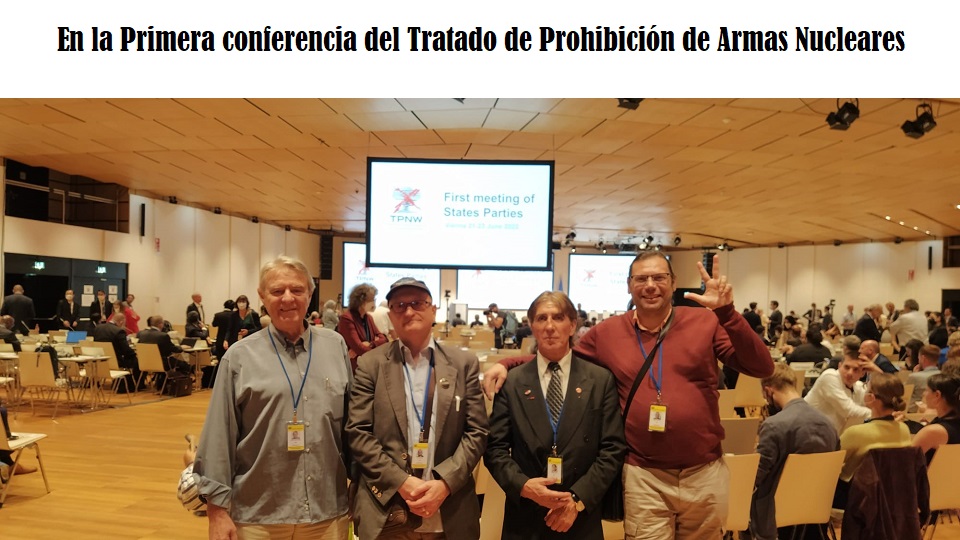In Vienna, a total of 65 countries with numerous others as observers and a large number of civil organizations, on Thursday, June 24 and for three days, lined up against the threat of the use of atomic weapons and promised to work for their elimination as soon as possible. soon as possible.
That is the summary of the first conference of the Treaty for the Prohibition of Nuclear Weapons (TPNW), which, with the rejection of NATO and the nine atomic powers, ended last Thursday in the Austrian capital.
Prior to the TPNW conference, other conferences were held, such as the ICAN Nuclear Ban Forum – Vienna Hub, Conference on the Humanitarian Impact of Nuclear Weapons and Aktionsbündnis Für Frieden Aktive Neutralität Und Gewaltfreiheit. It was a week of celebration of disarmament, collaboration and seeking understanding instead of confrontation.
In all cases, the common thing was the condemnation of the nuclear threats, the escalation of warlike tensions and the increase in the dynamics of confrontation. Security either belongs to everyone and for everyone or it will not work if some want to impose their vision on others,
In clear reference to the position of Russia for its invasion of Ukraine and that of the US, which through NATO continues to tighten the rope in a dynamic by which it intends to remain the world commander in chief in a world that has changed . We have already entered a regionalized world where no one can alone impose their will on others.
We breathe a new climate in relationships
The climate, treatment and consideration with which the debates, exchanges and decision-making were carried out in the TPNW sessions are very remarkable. A lot of consideration and a lot of respect for the points of view of others, even if they were contrary to their own, with technical stops to seek agreements and the like. In general, the chairman of the conference, the Austrian Alexander Kmentt, did a good job of navigating and resolving the many differences and diverse perceptions, finally, with great tact, bringing them to fruition. It was an exercise in skill in finding agreements and a common position. On the part of the countries there was firmness and at the same time flexibility in the face of situations that needed to be overcome.
Observers
The presence of observers and numerous civil society organizations gave a different atmosphere to the meetings and discussions.
The presence of observers from Germany, Belgium, Norway, Holland, Australia, Finland, Switzerland, Sweden and South Africa, among many others, is worth highlighting, which indicates the attention that this new area is generating in the world, in these complicated times where the confrontation we have served every day.
It should also be noted that the presence of civil society organizations generated an environment of relaxation, familiarity and connection where the institutional was not at odds with everyday life and common sense. This could be one of the characteristics of the Vienna summit, “the summit of common sense”.
We have an Action Plan
One of the characteristics of the final declaration is that it was adopted together with an Action Plan with a final objective: the total elimination of all nuclear weapons.
As long as these weapons exist, given the growing instability, conflicts "greatly exacerbate the risks that these weapons will be used, either deliberately or by accident or miscalculation," the text of the joint resolution warns.
Completely ban nuclear weapons
President Kmentt underlined the objective of "achieving the complete prohibition of any arsenal of mass destruction", stating that "it is the only way to be sure that it will never be used".
For this, two presidential relays of the TPNW conference have already been planned, the first being carried out by Mexico and the following by Kazakhstan. The next meeting of the TPNW will be chaired by Mexico at the United Nations headquarters at the end of November 2023.
The TPNW is a further step to the Treaty on the Non-Proliferation of Nuclear Weapons (NPT), to which many countries are adhered. It was necessary to get out of the blockade and the ineffectiveness of the NPT after decades in which it has not served to eliminate, but rather to enlarge the countries and further develop the sophistication of nuclear weapons. President Kmentt himself, for his part, stressed that the new treaty, which entered into force only a year and a half ago, is a "complement to the NPT", since it has not been conceived as an alternative to it.
In the final declaration, the TPNW countries recognize the NPT "as the cornerstone of the disarmament and non-proliferation regime", while "deploring" threats or actions that could undermine it.
More than 2000 participants
The numbers of promoters and participants in the TPNW conference are: 65 member states, 28 observer states, 10 UN international organizations, 2 international Programs and 83 non-governmental organizations. A total of more than a thousand people, including World Without Wars and Violence, participated as members of ECOSOC with representatives from Germany, Italy, Spain and Chile.
In total, among all the attendees in those 6 days, there were more than 2 thousand people in the 4 events that were held.
We believe that a very important step has been taken in the direction of a new world, which will surely have other nuances and protagonists. We believe that these agreements will notably help its progress and realization.
Rafael of the Rubia
3rd World March and World Without Wars and Violence
Original article in: Pressenza International Press Agency

